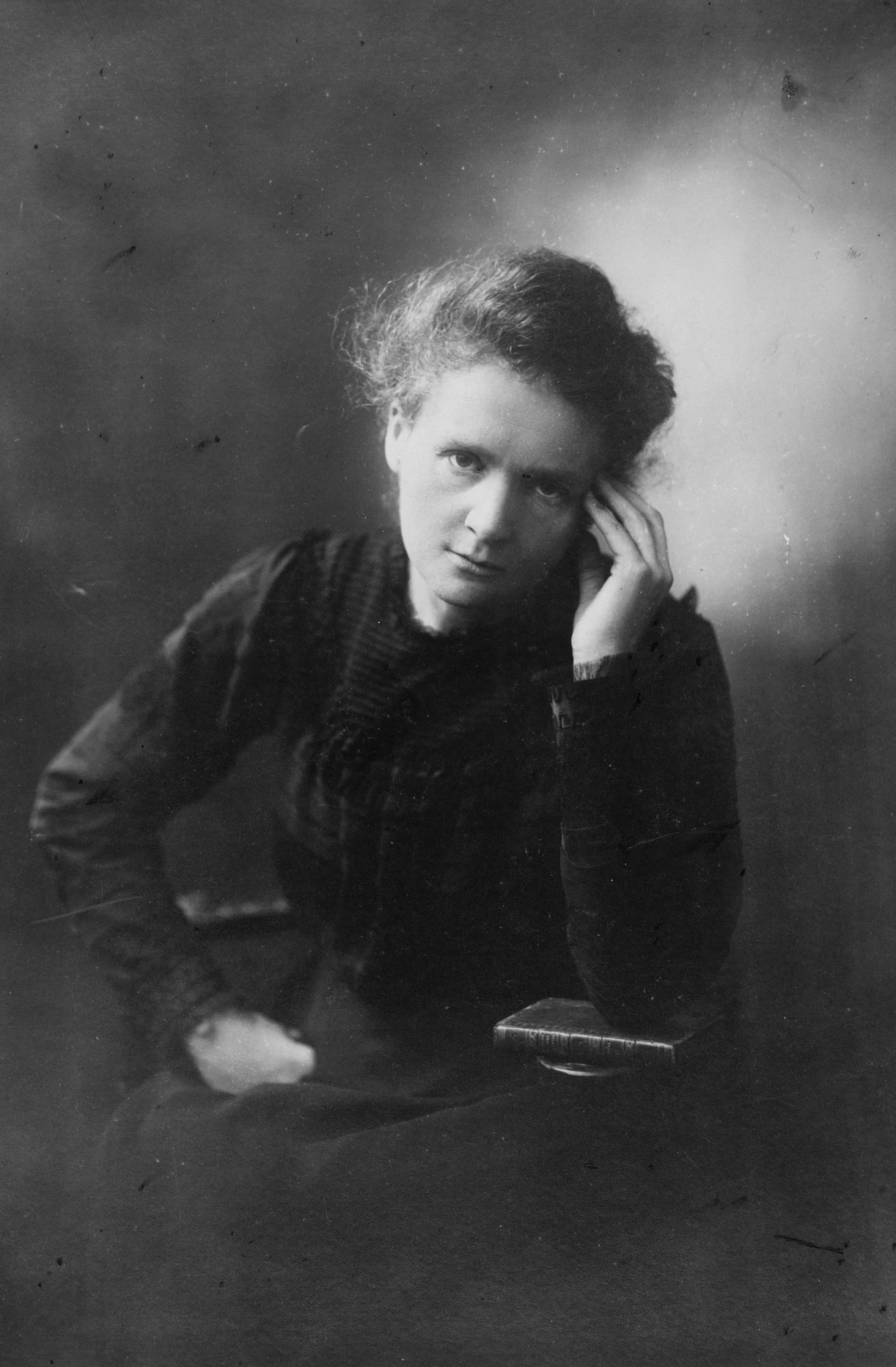Marie Curie
1867-1934

Marie Curie, born Maria Skłodowska, revolutionized science and paved the way for women in the field. Born on November 7, 1867, in Warsaw, under Russian rule, Marie was the fifth child in a family of patriotic teachers. From a young age, she showed a great interest in the sciences, but with Polish universities closed to women, she decided to pursue her studies abroad.
Studies in Paris
In 1891, Marie arrived in Paris and enrolled at the Sorbonne. Despite initial challenges, she excelled in her studies, obtaining a degree in physical sciences in 1893 and a degree in mathematical sciences in 1894. During this time, she met Pierre Curie, a renowned physicist, whom she married in 1895. Together, they embarked on a scientific collaboration that would lead to major discoveries.
Discoveries and Awards
In 1898, the Curies discovered polonium and radium, elements that were significantly more radioactive than uranium. Their work earned them the Nobel Prize in Physics in 1903, shared with Henri Becquerel. In 1904, Pierre was appointed professor at the Sorbonne, and Marie became head of the Curie Laboratory. Their scientific collaboration continued until Pierre’s tragic death in 1906.
Pioneer in Education and Research
After Pierre’s death, Marie resumed her position at the Sorbonne, becoming the first female professor at a university in France. In 1911, she was awarded a second Nobel Prize, this time in Chemistry, for her work on radium and polonium. During World War I, she developed mobile radiology units, known as “Petites Curies,” to help locate projectiles in the bodies of wounded soldiers.
Commitments and Later Years
After the war, Marie Curie continued her research and contributed to the establishment of the Curie Foundation for cancer treatment. In 1921, she traveled to the United States, where she received a gram of radium, scientific instruments, and funds for her research. She also engaged in intellectual cooperation, working with the League of Nations to promote science and peace.
Marie Curie died of pernicious anemia on July 4, 1934, likely caused by her exposure to radiation. In 1995, her ashes, along with those of Pierre Curie, were transferred to the Panthéon in Paris, in recognition of their exceptional contributions to science.
Impact and Legacy
Marie Curie left a lasting legacy in the scientific world. She demonstrated the crucial role of science in societal progress and became a role model for women scientists worldwide. Her discoveries in radioactivity not only revolutionized physics and chemistry but also paved the way for innovative cancer treatments.
Marie Curie remains an iconic figure of perseverance and the impact of women in science, inspiring generations of researchers to pursue their scientific dreams despite obstacles.
